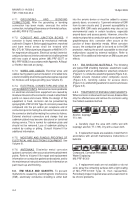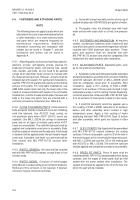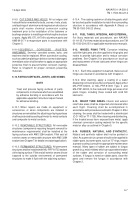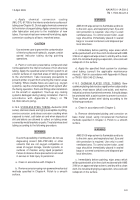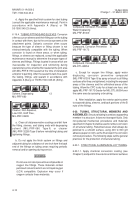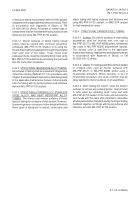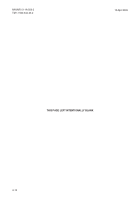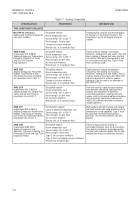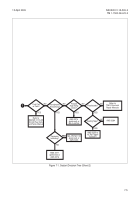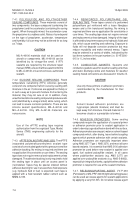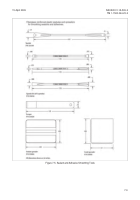TM-1-1500-344-23-2 - Page 117 of 240
7-1
NAVAIR 01-1A-509-2
TM 1-1500-344-23-2
15 April 2009
CHAPTER 7
SEALANTS
7-1. PURPOSE.
This chapter covers recommended
materials and procedures for the application of sealing
compounds to aircraft structures. Sealants prevent the
intrusion of moisture, rain, salt water, dust, and aircraft
fluids, which can lead to extensive corrosion and possibly
equipment failure. Sealants are one of the most important
tools for corrosion prevention and control. For sealants
to be effective, it is critical that the correct sealant be
chosen for a specific area/situation and that it be applied
correctly. Only qualified personnel thoroughly familiar
with sealants and their application shall be permitted to
handle and apply them.
7-2. REASONS FOR SEALING.
Sealants are used for
the following purposes:
a. Fuel sealing (integral fuel tanks).
b. Pressure area sealing (cabin areas and access
doors).
c. Weather sealing (exterior skin surfaces).
d. Firewall sealing (engine and ordnance areas).
e. Electrical insulation and sealing (bulkhead wiring,
electrical connectors, and electrical components).
f. Acid-resistant sealing (battery compartments and
relief tanks).
g. Window sealing (windshield and canopy).
h. High temperature sealing (engine areas, anti-icing
ducts, and some electronics).
i. Aerodynamic smoothing (void filling) and sealing
(exterior skin surfaces).
j. Sealing conductive gaskets (communication and
navigation antennas and static wicks).
k. Corrosion inhibition.
7-3. SEALANT PACKAGING.
Sealants are generally
packaged and available as three different units of issue
(U/I):
CAUTION
Sealants are sensitive to mix ratio and will not
cure or perform properly if incorrectly mixed.
a. Two Part Can Kit (KT): Package consists of a
curing agent (part A) and a base compound (part B) that
are pre-measured into separate containers. The entire
contents of both containers are intended to be mixed at
one time. Accurate weighing equipment shall be used to
achieve the correct mix ratio for smaller mixes.
b. Semkit Cartridge (CA): A complete plastic
cartridge assembly that stores, mixes, and applies
sealant materials. Semkit packages are convenient
because they eliminate the need to measure and handle
materials, prevent contamination when opening and
closing can kits, and reduce air entrapment which
causes voids in mixed sealant.
c. Premixed and Frozen (PMF): Sealant that is
pre-measured, mixed, and frozen at extremely low
temperatures. PMF sealants are the most convenient
package configuration for high usage applications;
simply thaw material according to manufacturer’s
instructions and use. PMF sealants are available in a
variety of sizes, but the 2
1
⁄
2
ounce and 6 ounce are the
most common.
7-4. SEALING COMPOUNDS AND MATERIALS.
Table 7-1 lists approved sealing compounds, available
types, classes, groups, properties, and intended use.
Refer to the applicable aircraft/equipment maintenance
manual and paragraph 7-7 for specific information
concerning proper application of sealing compounds.
Also, observe the warnings and cautions in paragraph
7-7 when using any sealing compound. If use of a
sealant is required, and no specific instructions are
available, the Sealant Decision Tree (Figure 7-1) may
be used as a guideline to determine the most appropriate
sealant.
Back to Top


